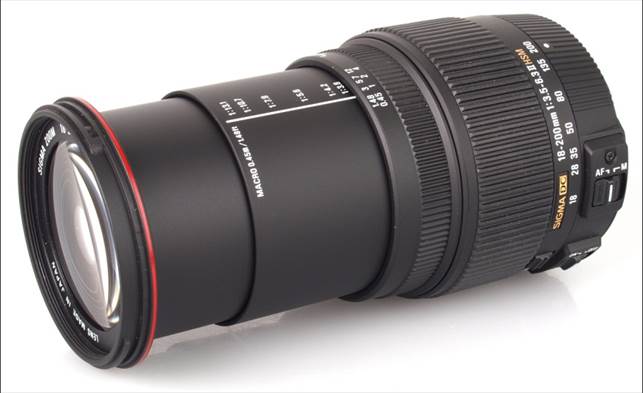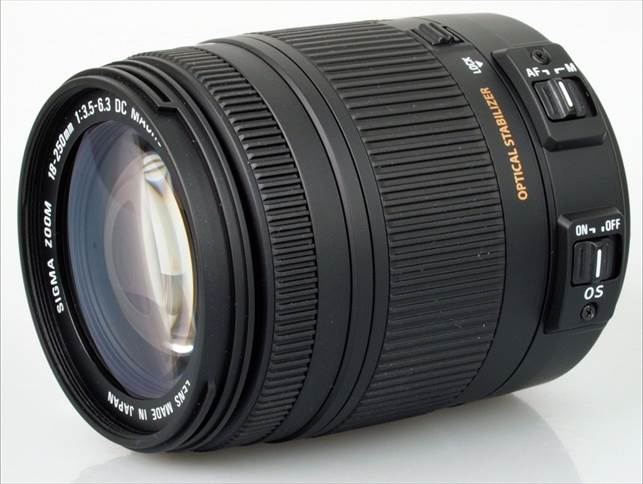2014 Superzoom Lenses Group Test (Part 3)
Range vs quality
Extra zoom range is attractive in any superzoom, but there
can be trade-offs in image quality. You’re pushing the limits of what’s
technically possible, and side effects can include increased barrel distortion
at the wide-angle end, and pincushion distortion at telephotosettings. You may
also see increased vignetting (corner darkening), especially at larger
apertures.
Reducing the aperture by a stop or two from its largest
setting is a good way to improve a lens’s optical quality. However, when you’re
shooting at the telephoto end with a superzoom, the largest available aperture
is quite small, typically f/5.6 or f/6.3. This means you might need to shoot
‘wide open’ to enable sufficiently fast shutter speeds to freeze motion or avoid
camera-shake – although with the advent of image stabilisation camera-shake is
less of a problem than it used to be.

A picture shot
with Sigma 18-200mm f/3.5-6.3 II DC OS HSM
Expert tip
All superzoom lenses increase dramatically in physical
length as you zoom from wide-angle to telephoto settings. There’s usually some
degree of ‘zoom creep’, where the lens lengthens or shortens (along with the
zoom setting) under gravity when the camera is pointed up or down. To avoid
zoom creep when your camera’s mounted on a tripod, use a strip of tape to keep
the zoom ring in place.
Sigma 18-200mm f/3.5-6.3 II DC OS HSM
We weren’t overly impressed by the original version of this
lens, but the Mark II edition has a lot more going for it. For starters it’s
smaller and lighter; in fact, it’s a practically identical in size and weight
to the Sigma 18-125mm, despite offering a much more generous zoom range. Other
similarities include an effective four-stop Optical Stabilizer and HSM-driven
autofocus.

Sigma 18-200mm
f/3.5-6.3 II DC OS HSM
Another addition to the Mark II lens is an FLD (Fluorite Low
Dispersion) element, which has very high light transmission and exceptionally
low dispersion, designed to match the performance of the fluorite glass found in
some of Canon’s top-spec L-series lenses. Even so, colour fringing reduction is
merely average and the largest available aperture at the telephoto end is still
only f/6.3.
The focus ring rotates during autofocus, so you need to be
careful not to foul its action with your fingers when holding the lens; apart
from this, handling is good. Distortions are well controlled and sharpness
remains good, even when combining the longest telephoto zoom setting with the
largest available aperture.
|
Verdict
·
Price: $300
·
For: Good image quality and zoom range with a small,
lightweight but solid build
·
Against: The zoom range is pretty generous, but not a match for
the class leaders
|
Sigma 18-250mm f/3.5-6.3 DC OS HSM
Compared with the new Sigma 18-200mm, this lens is a weighty
beast – tipping the scales at 630g, it’s the heaviest lens on test. The extra
zoom range makes it worthwhile though, extending to an effective 400mm. The
lens is also physically 13mm longer than the Sigma 18-200mm, and while that
might sound like bad thing from a stowage point of view it makes for better
handling because the focus ring, which rotates during autofocus, is further out
of reach for handheld shots.

Sigma 18-250mm
f/3.5-6.3 DC OS HSM
Like the other Sigma lenses on test, the HSM autofocus
system is only slightly faster and quieter than the Canon micro-motor system.
The four-stop Optical Stabilizer is highly effective, coming into its own at
the longer end of the zoom range, where the largest available aperture is a
mere f/6.3.
Despite lacking the FLD element fitted in the Sigma 18-200mm
lens, colour fringing is no worse. However, distortions are even better
controlled than with the 18-200mm at all focal lengths, which is no mean feat
considering the extra zoom range.
|
Verdict
·
Price: $350
·
For: Monster zoom range with excellent image quality
throughout; handles well
·
Against: It’s the heaviest lens in the group; physical length
may make stowage a consideration
|